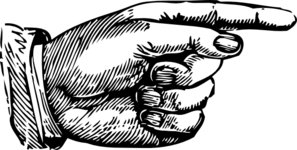
When you need to answer the question which one?, your best friend is the demonstrative pronoun. In Icelandic, this means having a discussion involving the words þessi, sá and hinn. Since we are talking about the usual 3 genders, 4 cases, singular and plural, it means a possible 24 forms of each word. Nobody said it was easy 🙂 Fortunately several of the forms are identical, so you do get a bit of a break. So here’s a very brief introduction to demonstrative pronouns in Icelandic:
When first starting out in Icelandic, you learn simple sentences like:
Hvað kostar þessi bók?
How much does this book cost?
Þetta hús er stórt.
That house is big.
This is the most basic use of a demonstrative pronoun. Þessi is typically used for referring to something nearby, something you could point at for instance. The fun starts when we need to use the other 3 cases besides the nominative:
| þessi – this | ||||||
|---|---|---|---|---|---|---|
| singular | plural | |||||
| masculine | feminine | neuter | masculine | feminine | neuter | |
| nom | þessi | þessi | þetta | þessir | þessar | þessi |
| acc | þennan | þessa | þetta | þessa | þessar | þessi |
| dat | þessum | þessari | þessu | þessum | þessum | þessum |
| gen | þessa | þessarar | þessa | þessara | þessara | þessara |
Ég ætla að kaupa þennan bíl / þessa bíla.
I’d like to buy this car / these cars.
Má ég skoða þessa bók / þessar bækur?
Can take a look at this book / these books?
Er mjög skemmtileg saga í þessari bók.
There is a very entertaining story in this book.
Eru mjög skemmtilegar sögur í þessum bókum.
There are very entertaining stories in these books.
Þau gleyma aldrei þessum degi.
They will never forget this day.
Eigandi þessa húss er ekki heima.
The owner of this house isn’t home.
Rithöfundurinn þessarar bókar / þessara bóka er mjög frægur.
The author of this book / these books is very famous.
When referring back to something already mentioned, or in expression such as “that one, who/which”, sá is typically used:
| sá – that (one) | ||||||
|---|---|---|---|---|---|---|
| singular | plural | |||||
| masculine | feminine | neuter | masculine | feminine | neuter | |
| nom | sá | sú | það | þeir | þær | þau |
| acc | þann | þá | það | þá | þær | þau |
| dat | þeim | þeirri | því | þeim | þeim | þeim |
| gen | þess | þeirrar | þess | þeirra | þeirra | þeirra |
Sá maður, sem fór til Íslands.
That man who went to Iceland.
Sú kona, sem þú sást í gær.
The woman you saw yesterday.
Við tölum um þá bók sem hlaut verðlaun.
We’re talking about that book that won an award.
sá, sem… is a very common construct.
You often see þann used when referring to a date:
Hann lést þann 25 mars, 1912. – He died March 25, 1912.
Other than being used as the free definite article, hinn is often seen with þessi when contrasting one thing with another:
| hinn – that, the other | ||||||
|---|---|---|---|---|---|---|
| singular | plural | |||||
| masculine | feminine | neuter | masculine | feminine | neuter | |
| nom | hinn | hinn | hitt | hinir | hinar | hin |
| acc | hinn | hina | hitt | hina | hinar | hin |
| dat | hinum | hinni | hinu | hinum | hinum | hinum |
| gen | hins | hinar | hins | hinna | hinna | hinna |
Þessi maður er hávaxinn, en hinn er lávaxinn.
This man is tall, and this one is short.
Hitt og þetta.
This and that.
Hinn daginn.
The day after tomorrow.
Ein af þremur bókum er á skrífborðinu, hinar eru á bókahilluni.
One of three books is on the desk, the others are on the bookshelf.
So you should now at least be able to point out exactly which erupting volcano you want to run away from… 🙂
